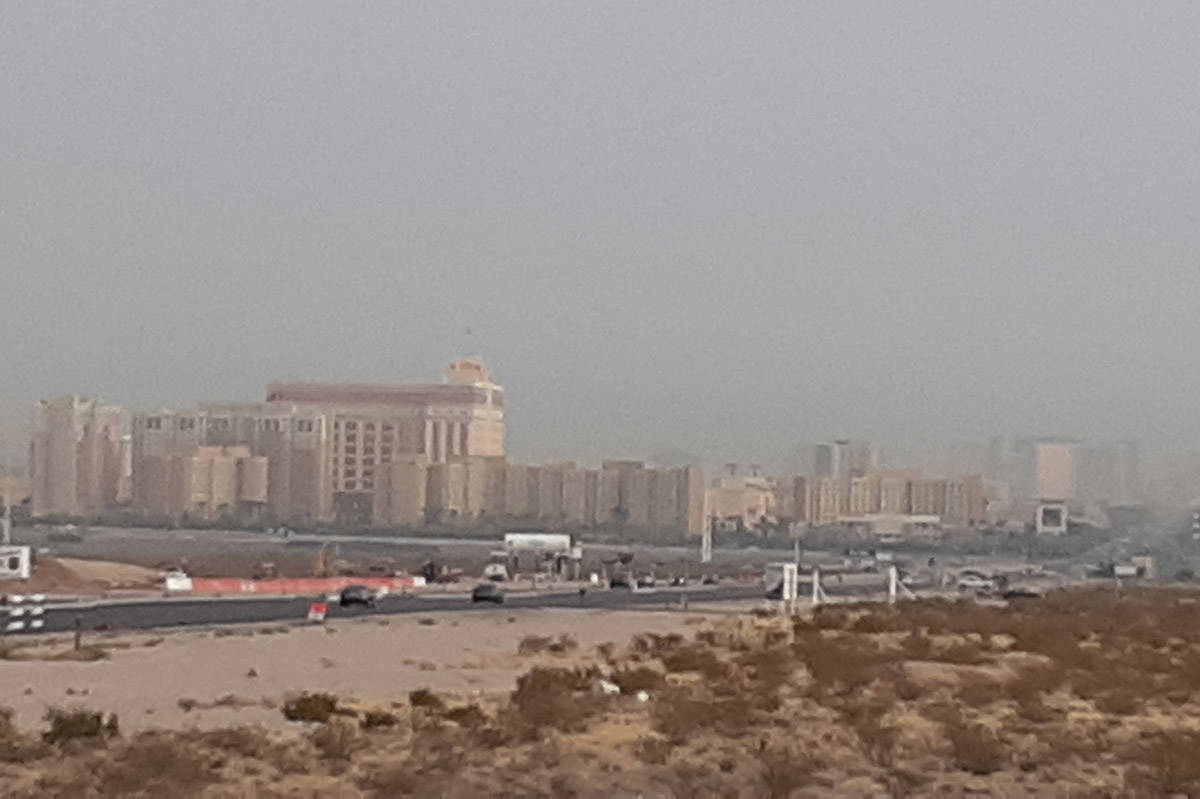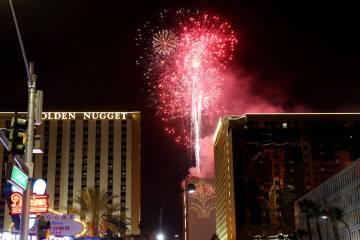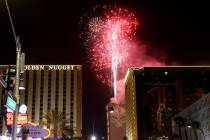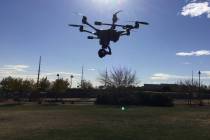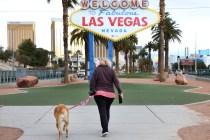Wildfire smoke, pollutants moving Las Vegas air quality into moderate category
With a gray sky showing more visual pollutants than perhaps anytime this week, Clark County air quality was moving into the moderate category Friday morning.
Wildfires burning across much of the West for the past two weeks have been sending smoke and pollutants into Las Vegas and all the way to the East Coast and to Europe.
A monitoring station in central Las Vegas was showing a moderate level of ozone and nitrogen dioxide Friday, while a station in Jean was showing a slightly higher level of ozone.
As of 9:30 a.m., only three of the six monitoring stations in the county were displaying their monitoring statistics. The air quality in Boulder City was rated good.
A smoke and ozone advisory was issued by the Clark County Department of Air Quality and extends through Monday.
“Moderate (air quality) for ozone and particulate matter remains with persisting smoke from Western U.S. wildfires,” according to the Clark County air quality website. “Low pressure north of us passing through the weekend will bring breezy south-southwest winds with periods of blowing dust on Friday and Saturday.”
The air quality is forecast to be moderate through at least Monday.
Residents with respiratory issues are advised to consider limiting their outside exposure, the advisory explains.
No impact at McCarran
Various national media reports indicated flights were being canceled at airports because of smoke from wildfires burning across much of the West, but that was apparently not the case at McCarran International Airport.
“As of now, we are not seeing any delays, nor are we seeing any operational delays” because of the smoke, McCarran spokesman Joe Rajchel said.
A million fires a year
“The fires are harming the air quality for people who might live thousands of miles away from the fire,” Douglas Morton, the chief of the Biospheric Sciences Laboratory at NASA’s Goddard Space Flight Center, told CNN on Friday.
“Every year from space we map more than a million large wildfires,” Morton said. “And it’s true that the records we’ve seen for the longest, the largest and the fastest fires fall every year as we watch new and unprecedented burning in the Western United States or Australia.”
Contact Marvin Clemons at mclemons@reviewjournal.com. Follow @Marv_in_Vegas on Twitter.



